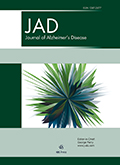Authors: Fan, Meixiang | Li, Qingfeng | Yang, Tingting | Yang, Yinghua | Chen, Zhihua | Xuan, Guo | Ruan, Ye | Sun, Shuangyuan | Wang, Meng | Chen, Xiaoli | Huang, Yanyan | Yang, Zhi | Wang, Ying
Article Type:
Research Article
Abstract:
Background: Previous trials have indicated that multimodal training could improve cognitive functions and moods in individuals with mild cognitive impairment (MCI). However, evidence was mainly obtained from studies in high-income countries. Objective: This trial aims to investigate the efficacy, safety, and potential mechanism of a multimodal intervention on cognitive function in individuals with MCI living in a community. Methods: In this single-blind, randomized controlled trial, 120 participants with MCI were randomly assigned to either the intervention group or the control group. The intervention group received the multimodal intervention, while the control group received regular health education.
…Neuropsychological tests and magnetic resonance imaging (MRI) were conducted at baseline and after the 12-week intervention. Results: Fifty-nine and fifty-seven participants respectively in the intervention and control groups completed the trial. The intervention group shown improvements in primary outcome, Mini-Mental State Exam (MMSE) total score (mean difference –0.96, 95% CI [–1.58, –0.34], p = 0.003), and secondary outcomes: MMSE recall (–0.39, 95% CI [–0.71, –0.07], p = 0.019), MMSE language (–0.26, 95% CI [–0.44, –0.07], p = 0.007), Auditory Verbal Learning Test instantaneous memory (–3.30, 95% CI [–5.70, –0.89], p = 0.008), Digit Symbol Substitution Test total score (–2.91, 95% CI [–5.67, –0.15], p = 0.039), digit span forwards (–1.25, 95% CI [–1.93, –0.56], p < 0.001), and Digit Span Test (–1.33, 95% CI [–2.33, –0.34], p = 0.009) compared to the control group. Improvements were observed in structural and functional connectivity related to language, concentration, executive function, memory, and recall functioning via MRI in the intervention group. Conclusions: The multimodal intervention improved cognitive function in individuals with MCI in cognitive performance and neuroimaging.
Show more
Keywords: Alzheimer’s disease, behavior therapy, clinical trial, cognitive dysfunction
DOI: 10.3233/JAD-231370
Citation: Journal of Alzheimer's Disease,
vol. Pre-press, no. Pre-press, pp. 1-14, 2024





